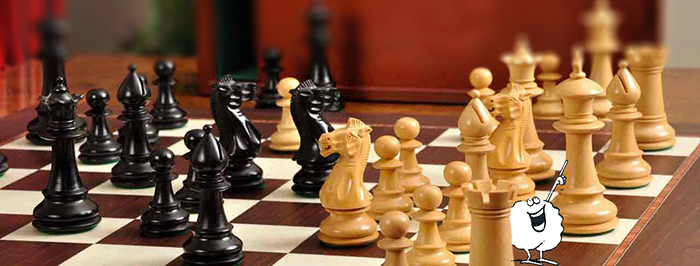
Article by Raymond Keene OBE
UK's Chess Grandmaster
Chess as a strategic metaphor.
Strategy – Decision - Action
In mid17th century Japan Miyamoto Musashi, the invincible Samurai warrior, wrote Go Rin No Sho, A Book of Five Rings, a penetrating analysis of victorious Samurai strategy. For over three centuries this martial arts masterpiece remained a Japanese secret, but in 1974 it was discovered by the West. Almost overnight, the new translation sold more than 120,000 copies in hardback, catapulted to best-seller status in paperback and drew lavish praise from leading newspapers around the world.
Time Magazine wrote: ‘On Wall Street, when Musashi talk, people listen.’ The New York Times added that Musashi’s strategy was ‘suddenly a hot issue on Wall Street’.
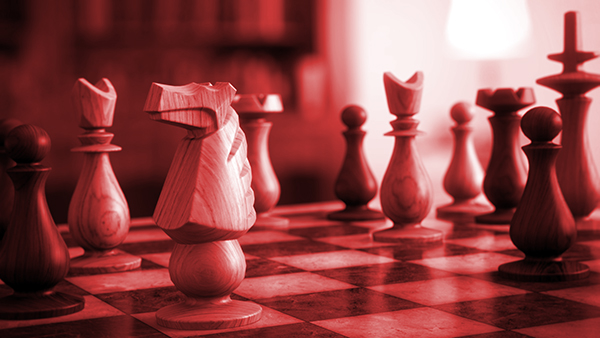
From one thing, know ten thousand.
Musashi’s central message is one of ‘wider application’, of ‘transferability’. Achieving mastery in one-discipline arms you with the weapon to transfer those skills to all other areas of life. Although on the surface-Musashi’s book is specifically a guide to Samurai swordsmanship, at deeper levels it provides a blueprint for strategy, decision and action in the home, on the battlefield, in the corporate boardroom - in fact, wherever you choose to apply it.
Musashi summarized its essence thus, stating and re-stating his theme throughout the book: ‘From one thing, know ten thousand things. When you attain the Way of strategy there will not be one thing you cannot see ... If you know the Way broadly you will see it in everything.’
The mind sports metaphor.
In spite of its undoubted brilliance, Musashi’s book has two draw backs for a modern audience. First, Musashi frequently expresses himself in a sometimes obscure and often impenetrable Zen terminology. Secondly, the 21st century reader will find it difficult, if not impossible, to participate at any meaningful level in Musashi’s prime metaphor, that of Samurai swordsmanship, when with a real blade you face an opponent whom you must kill before he kills you. We are not likely to wield a Samurai sword in a life or death situation. Samurai swordsmanship will always remain beyond our personal experience.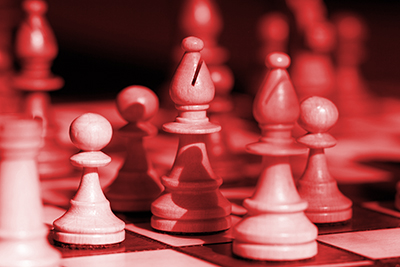
Accordingly, this presentation turns to the easy-to-learn game of chess, already well established as an important thinking and business metaphor. It re-interprets and updates Musashi’s martial arts message, and extends it through a new dimension, a martial art of the mind.
In its various manifestations (Western, Japanese and Chinese) chess is the world’s most popular mind sport, with well over 400 million devotees. Chess is also at the cutting edge of the quest for artificial intelligence. Six times World Champion Garry Kasparov regularly faced off in matches against IBM’s Deep Blue super-computer in which million-dollar prize funds were at stake.
Victory without killing.
Most importantly though, chess offers the experience of real victory, without killing, and the parallel experience of real defeat, without having to die. Playing chess, you face pressure of time, you must assess risk accurately, and you must think globally and locally: in other words, it is all down to you. You truly win or you truly lose.
No accidental results.
There are no accidental or chance results in chess. The ethos of entitlement and the syndrome of blaming others for setbacks are both alien to the game. Indeed, it is the qualities of personal enterprise and self-reliance that distinguish chess. The chessplayer should not blindly accept the pronouncements of authority. Thinking for yourself is what counts. At the chessboard, real situations beckon and, as Musashi would have put it, in mastering chess, you master in microcosm all forms of combat and strategy, for any application you may choose.
After absorbing this message, you will learn an approach to winning based on martial arts’ principles. And whether you are a novice or an experienced player, you will come to enjoy a unique metaphor for success in business and life.
Lessons and Benefits.
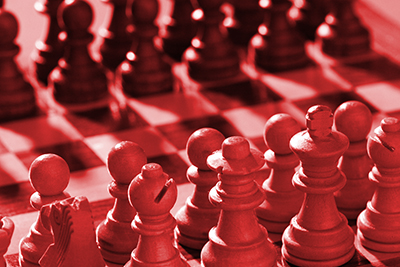 As you learn the objectives, basic strategy and tactics you will also be guided to begin thinking like the greatest strategists of all time - the Samurai.
As you learn the objectives, basic strategy and tactics you will also be guided to begin thinking like the greatest strategists of all time - the Samurai.
We remind serious students of the old Japanese saying, ‘When you have completed 95 per cent of your journey, you are half way there.’ As you climb the mountain of chess the air gets thinner and progress can seem elusive. This disquisition offers an Insight into mental fitness to liberate your full potential as a mental warrior.
If chess were a game only, chess would never have survived the serious trials to which it has, during the long time of its existence, been often subjected. By some ardent enthusiasts chess has been elevated into a science or an art. It is neither; but its principal characteristic seems to be - what human nature mostly delights in - a fight. Not a fight, indeed, such as would tickle the nerves of coarser natures, where blood flows and the blows delivered leave their visible traces on the bodies of the combatants, but a fight in which the scientific, the artistic, the purely intellectual element holds undivided sway. ‘ Emanuel Lasker, World Chess Champion 1894 to 1921
Why choose chess?
Chess is open to everyone, regardless of age, gender, physical or economic status, and offers many specific and profound benefits.
Developing memory power.
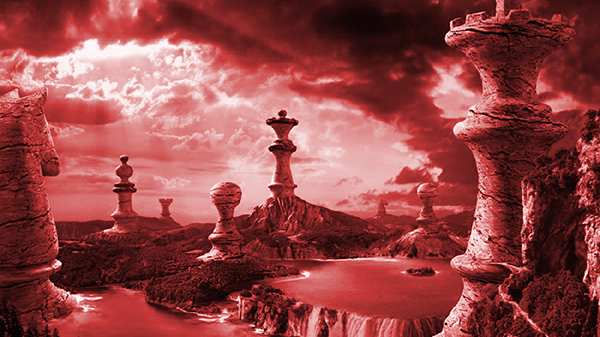 International Grandmasters can play many opponents simultaneously and remember all the moves from each game. They were not born with this skill - they developed it through intense practice and concentration. Memory is the cornerstone of intelligence and the database for creative thinking. All creative thinking is the result of new combinations of recalled ideas. As you learn chess openings and basic patterns of play you begin to flex and strengthen your memory muscles. I have, for example, challenged 107 opponents placed in a giant square around me, at Oxford 1973, and in three hours lost just one game, winning 101 and drawing 5. After the display I could remember all the moves of every single game.
International Grandmasters can play many opponents simultaneously and remember all the moves from each game. They were not born with this skill - they developed it through intense practice and concentration. Memory is the cornerstone of intelligence and the database for creative thinking. All creative thinking is the result of new combinations of recalled ideas. As you learn chess openings and basic patterns of play you begin to flex and strengthen your memory muscles. I have, for example, challenged 107 opponents placed in a giant square around me, at Oxford 1973, and in three hours lost just one game, winning 101 and drawing 5. After the display I could remember all the moves of every single game.
Slowing the aging process.
According to Leonardo da Vinci, ‘Iron rusts from disuse, water that does not flow becomes stagnant, so it is with the human mind.’ Much of what passes for mental decline with age results from ‘disuse’. Research has shown that individuals who regularly play mental sports are less susceptible to Alzheimer’s and other diseases associated with advancing years. Chess keeps your mind agile, strong and clear as you get older.
Aesthetics.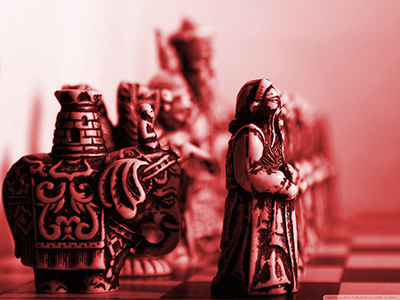
Chess is beautiful. The artist Marcel Duchamp believed that: ‘Every chessplayer experiences a mixture of two aesthetic pleasures: firstly, the abstract image, linked with aesthetic ideas; secondly the rational pleasure of ideographically implementing this image on the chessboard. Not all artists may be chessplayers, but all chess players are artists.’ Chess is a sensual as well as a ‘purely mental’ delight.’ A good chess set is a work of art. As you play and learn in this vibrant universe of black and white squares, you come to love the feel of the pieces in your hand, and to revel in the dramatic diagonal sweep of the bishop, the delightful leap of the knight, and the powerful thrust of the rook.
Self-knowledge and insight into others.
For those given to reflection, chess offers a mirror to selfunderstanding. Can you follow through when you have made a plan? How do you hold up under pressure? Are you impatient? Are you mentally lazy? Can you manage time? Do you play to win or to draw? Does fear of making mistakes prevent you trying something creative? Do you attend to details? Are you a gracious winner, a sore loser?
As well as teaching you about your own strengths and weaknesses, chess can develop your ability to understand others. To succeed at chess, you must learn to. Think like your opponent, even if your opponent’s style of thinking is very different from your own.
‘Life is like a game of chess: we draw up a plan; this plan, however, is conditional on what - in chess, our opponent - in life, our fate - will choose to do. ‘ - Artur Schopenhauer, Parerga and Paralipomena, 1851.
Stronger decision-making and accountability.
In many areas of life, one can get by with waffling, finger pointing and obfuscation, but not on the chessboard. Chess is a game of decision-making. The root of the word ‘decide’ means ‘to kill the alternatives’. In chess, you must decide on a move in a given time, make it, and be prepared to live with the consequences. As World Champion Emanuel Lasker commented, ‘On the chessboard,lies and hypocrisy do not survive long.’
Sharpening analytical and strategic thinking.
Asked what use chess was, the German philosopher Gottfried Wilhelm Leibnitz replied that it provided ‘practice in the ability to think and innovate. Wherever we have to make use of reason, we need an elaborate method to reach our goals. And moreover: a person’s resourcefulness is most apparent when playing.’
Innovation and ‘resourcefulness’ are even more important today. The ability to analyse a problem, plan its solution, and then carry out that plan is life’s most important skill. Chess hones this ability in a unique and dramatically effective fashion. ‘Improvement of ... endeavour, the prevention of idleness, and the training of far-sighted, logical mental enjoyment.‘
Jacobus de Cessolis writing in about 1300 about the invention of chess. De Cessolis was a Dominican monk who employed chess allegories in his sermons. And one more thing, join the mental elite: 600,000,000 people around the world play chess. ‘Arabian writings of the 10th century AD not only praised the beauty of chess, the authors of the period also recommended chess as an educational aid in the development of logical thinking. They also held the opinion that chess could lead to an insight into things to come, could enhance friendships, and also protect against loneliness. The Arabs became enthusiastic players and all classes of society were enchanted by the game. Even the Caliphs played and were very generous to the masters, the best of whom was As-Suli, showering them with gold and gifts. As-Suli’s fame was so great that he was later credited with having invented the game. Almost 300 years later it was still considered a great honour for a master to be likened to As-Suli.‘
Finkenzeller, Ziehr and Buhrer, Chess: a Celebration of 2000 Years.
Applying chess based skills.
Ask any top headhunter what kind of person they seek to hire for senior management positions. They will tell you that, besides the basics of strong analytical and decision-making skills, they need people with superior strategic-thinking abilities who are willing to be accountable for their actions: people with insight into others, who can plan and act under pressure, especially in the face of uncertainty. There is no better way to develop these abilities than through chess and other mind sports.
Risk and Reward.
A background in chess may prove better preparation for business success than even an MBA or a PhD. In 1990 Bankers Trust, a leading US financial institution, ran advertisements in Chess Life, the world’s widest-read chess magazine, seeking talent for its trading division. The advertisements generated over 1,000 resumes; the bank interviewed 100 respondents and hired five, two of them Grand masters, the other three International Masters. During World War Two the British Government code-breaking centre at Bletchley Park hired all the strongest UK chess masters. One of them, two times British Chess Champion, Hugh Alexander, was portrayed prominently in the recent smash hit film about the breaking of the Nazi codes - The Imitation Game.
One of the gurus behind the Bankers Trust programme was international chess master Norman Weinstein, who became the bank’s top foreign exchange trader, before moving on to Odyssey Partners. Weinstein attributes his success to his chess background. In an interview in 1994 with Forbes, Weinstein emphasized:
In chess, you learn to plan variations of play, to make a decision tree. One thing I find myself better in than most people is developing a strategy and implementing it. I’ll say, ‘If he does this, we’ll do that,’ whereas many very, very bright people will talk in generalities.
As an example Weinstein discussed his approach to analysing the possible break-up of the European monetary system.
To make a play on this involved shorting a number of currencies, which is very expensive to do. So I ... did a poll of traders and economists, asked them to guess the probabilities of a break-up, and ran these through the risk-return analysis. The results made it clear that it would be profitable to keep on shorting the market, despite the day-to-day losses. It paid off in about one month.
He added that chess develops talent for rapidly calculating probabilities - spotting opportunities and balancing risks against rewards. At the same time it also cultivates willingness to stick to a strategy, even when it produces losing streaks in the short run, an essential trait for investment managers and business leaders.
SKANDIA, the international finance giant, used a powerful chess theme throughout its 1995 report on value-creating processes and intellectual capital.
Michael Becker, a champion mental athlete and trader on the American Stock Exchange, told Forbes that chess is the ideal way to develop analytical ability. He recruits and trains traders and always looks for accomplished chessplayers. One of his most successful trainees is Ronald Henley, a Grandmaster who now runs his own firm. Becker says that traders with a background in mental sports consistently out-perform their colleagues.
As part of an intensive three-week leadership training course, the top 250 managers of LGT, the international banking and Investment Company, all receive daily tuition in chess and other mental sports. Gerard Quirke, European Operations Director for LGT’s asset management business, told Raymond Keene:
We now have a thriving LGT International Chess Group, with people playing every day, even on electronic mail, with colleagues from all over the world. Learning to play chess as part of the course acted like aerobic exercise, but on the mind. It was like a personal fitness regime for the brain.
Notable chess players.
Alexius Comnenus, the 11th-century Byzantine Emperor, was allegedly playing chess when he was surprised by a murderous conspiracy. Being a good chessplayer, he managed to escape! In real life the Aladdin of the fairy tale was a chessplayer,a lawyer from Samarkand in the court of Tamburlaine, the 14th-century conqueror of much of Asia. Tamburlaine himself loved to play chess; he named his son Shah Rukh, for he was moving a rook when the birth was announced. Goethe was an avid chessplayer and believed that the game was essential to the cultivation of the intellect. Benjamin Franklin, another genius, was also an enthusiast - his Morals of Chess, was the first ever book on chess published in the USA. Other notable chess enthusiasts were Queen Elizabeth I, Russian Czar and founder of the Russian Navy, Peter the Great, and the French Emperor Napoleon Bonaparte, as documented at length in Napoleon the Great, published this year by noted historian Andrew Roberts.
The rage of New York.
It is a grave mistake to think that chess, the intellectual game of profound concentration and Trappist silence, is an anti-social game, or that its players are all drawn from social elites. Throughout the world its appeal is deep-rooted, and it shows that intelligence - like a cultured foot or fist - is no respecter of conditioning or class. In New York’s parks, games are played at lightning speed (only wimps need time to think), with resident hustlers pocketing an endless flow of bets. To chess traditionalists, this is startling enough. Even more significant, chess has proved itself a game, like football or boxing, that can lift poor kids out of the ghetto. In London and Berlin, for example, the amazing new sport of Chessboxing (combining the two activities in alternate bouts) has begun to flourish.
The Raging Rooks, a team from Adam Clayton Powell Junior School in Harlem, are an example. In April 1991, four students from this school in one of the most deprived areas in the whole of New York, wiped the board with teams from 60 other schools - some private and elite, and just about all of them better off than themselves - to win the US Chess Federation’s National Junior Championships. They had hardly been out of Harlem before. One of them had never even ridden in an elevator. Yet suddenly they had to get used to the full and questioning glare of the public and the media.
Women and chess.
The world has become accustomed to brilliant results by the HungarIan prodigy Judit Polgar. But although an increasing number of female players are pushing to the fore, male chessplayers still form the great majority in top-level international competitions. Why should this be the case?
In Arabic times around 1000 AD many stories circulated concerning powerful female chessplayers. During the Renaissance in Europe, the playing of chess by women was a common theme in contemporary art. Even as late as the 18th century, the English artist Angelica Kaufmann, whose tondos adorn the foyer of London’s Royal Academy, could depict herself playing chess as a symbol of the abstract notion of Composition. It was only during the late 19th and early 20th centuries, when chess became accepted as a possible profession, that the role of female players receded into the background. Indeed, for most of the 20th century, male and female players have been segregated into separate Championships.
This is all now due to change, and probably quite swiftly. Unlike physical activities, mental sports, such as chess, present absolutely no barriers to competition of gender, race or physical strength. The time will doubtless - and soon - come when one of Judit’s followers will be competing in her own right for the absolute championship of the world.
Nigel Short, who has joined the unfortunate academic Sir Tim Hunt by casting aspersions on female brainpower, has nevertheless admitted that his greatest embarrassment came when he lost to the Georgian female world champion Maya Chiburdanidze. One of Argentina’s top chessplayers is Claudia Amura. Two of Britain’s champion players, John Nunn and James Plaskett, have both been beaten, not just by teenagers, but also by teenage girls. Nobody likes to be beaten. Men especially do not like to be beaten by women. But they will have to get used to it for there has been a rush of new female talent around the world. Among those at the top of the ratings are Alisa Maric from Former Yugoslavia, Nana Ioseliani from Georgia, Pia Cramling from Sweden,teenager Hoanng Trang from Vietnam, and Hou Yifan, the Women’s World Champion, from China.
The Polgar sisters.
According to Cathy Forbes, the former British Women’s Champion, one of the reasons women are on a roll is the startling success of the Hungarian Polgar sisters. These young women, raised to be masters of the game by their dedicated and ambitious father Laszlo, have all turned out to be extraordinarily successful. ‘Their achievement has inspired a generation of women and girls,’ says Forbes, who has written a book, The Polgar Sisters, about the family. ‘The growth has been amazing. There used to be just a handful of good women chessplayers. Now they’re all very good.’
To Forbes, the Polgar experiment shows exactly what she herself has long believed - that excellence in chess can be taught. Girls are not born mentally less well equipped than boys; it is nurture, not nature that makes the difference.
CHESS AND THE EVOLUTION OF CULTURE
The first board games.
Games have been played since the dawn of civilization some ten thousand years ago. The earliest writings regularly refer to games similar in concept to tic-tac-toe (noughts and crosses). As a society progressed, so did the complexity of its games.
Irving Finkel of the Western Asiatic Antiquities Department at the British Museum, and author of the definitive book on Noah’s Ark, is an expert on the earliest board games:
There are different schools of thought on the origins of games. Some people think that they came out of divination practice. The apparatus for divination - dice and ritual boards - may have later been used for entertainment. Others think it was the other way round. In 1923, when Sir Leonard Woolley excavated the royal graves at Ur in Mesopotamia, he discovered five sets of a game played around 3000 to 2600 BCE. This game has become known as the Royal Game of U r and it is usually quoted as the earliest known. It was a ferocious gambling game. Some insight as to how it was played can be gleaned from a detailed inscription within the tombs. Around this time there was a belief that the deceased must play the game with one of the underworld deities to guarantee safe passage into the afterlife. The inscription concentrates on betting strategy - presumably advice to the dead king from the game’s contemporary experts.
Play was similar to modern ludo or backgammon, with pieces being moved into, along and off the board according to the throw of pyramid-shaped dice. A fine example is on exhibit at the Museum. According to Dr Finkel, more recent archaeological discoveries in Palestine and Jordan may make the Royal Game of Ur a relative newcomer. Game boards have been found that can be dated back to Neolithic times, some 4000 years before the Royal Game of Ur. ‘At that time,’ he says, ‘we had large urban conglomerations of people with controlled livestock, domesticated plants and animals. There was specialization of labour. And there was obviously, in daily life, room for amusements.’
In 1989 Gary Rollefson of the San Diego State University discovered a stone game board at Ain Ghazal, Jordan. This and other similar discoveries have been dated to between 7000 and 6000 BC. Though we cannot be certain of their purpose, there is strong evidence to suggest they are game boards. Their layout is very similar to the traditional seed-sowing game of mancala, which is popular to this day across Africa. If these tablets were indeed used for recreation, Middle Eastern civilizations had developed board-type games before they could write or even make pottery.
How chess began.
The ancient ancestor of chess was an Arabic game called shatranj. It was popular in Baghdad by the 8th century AD, but its origins can be traced back as far as 350 BC. Shatranj was a slow-moving game in which the queen and bishop had much less freedom of movement than their modern counterparts; nonetheless it was recognizably chess.
The ancestry of shatranj spanned two continents and - appropriately for a war game - was a by-product of a military campaign. The bloodline may be traced back more than 2000 years to Ancient Greece. In his Politics Aristotle mentions a group of classical boardgames called petteia. These were battle games, which demanded skill, logic and reason, not simply the fortuitous throw of a die. In his Republic Plato compares victims of Socrates’ debating skill with ‘weak petteia players ... cornered and rendered unable to move’. In about 330 BCE Alexander the Great invaded Persia and marched on towards in Asia Minor and India. Along the way he founded Hellenic colonies in which the Greeks continued their passion for petteia. At the same time, India had a battle game of its own. It shared its Sanskrit name, chaturanga, meaning ‘four divisions’, with the Indian army. The divisions in question were elephants, chariots, cavalry and infantry, all mobilized in the game by throws of dice.
It did not take long for chaturanga, the Indian war game of chance, to meet and marry petteia, the Greek game of reason. The effect of petteia on chaturanga was to eliminate the dice, and from this collision of cultures, chess - Greek thought expressed in Indian language - was born. The Muslim Arabs adopted it, and translated the Indian chaturanga into the Arabic shatranj.
Via the squares on a chessboard, the Indians explain the movement of time and the age, the higher influences which control the world and the ties which link chess with the human soul.
The Arabian historian Al-Masudi writing in AD 947
The Renaissance: expansion of possibility.
Not until about 1470 did chess begin its transformation from the slow Islamic form to the quick-fire game we know today. Castling was introduced at this time, pawns gained the privilege of advancing two squares on their initial move, and the queen switched from being a waddling cripple (the Arabic vizier, allowed to move only one square at a time) to the most powerful piece on the board.
Recorded games of the time show all the exuberant naivete of excited novices - the queen pursuing joyous adventures all across the board, giving check regardless of whether or not it offered the player any advantage. As chess is a game that symbolizes warfare, it is reasonable to suppose that the increased firepower of the queen reflected the introduction of field artillery in the late 15th century.
The sudden advance of chess as a whole must also have been a product of the Renaissance. An increasingly urgent perception of distance, space and perspective distinguished human intellectual development. Parallel developments included the innovatory use of siege artillery to batter down the walls of Constantinople in 1453, scientific advances such as the telescope and the microscope and the application of perspective in art.
The next country to exert decisive influence was Spain. After 1492 Spain rapidly became the dominant force in world communication, and the new form of chess spread across the world through her explorations and conquests. The conquistadores were keen players of a game that mirrored their combative lifestyle, and they taught it to the defeated Inca and Aztec kings in the New World.
The modern game.
The modern era of chess began with Wilhelm Steinitz, who became the first of thirteen World Champions in 1886. Every subsequent World Champion has pushed forward the boundaries of chess knowledge, science and art, each in his own way reflecting the intellectual ethos of his day.
Steinitz was a contemporary of Darwin and Marx, who proposed rigid theories to elucidate the evolution of species and the nature of society and government. Like them, Steinitz tried to impose an ironclad theory on chess. In his case, it was the insistence that no attack could be successful unless a prior strategic advantage had been achieved. This contrasted strongly with previous practitioners of chess, who had not been averse to launching haphazard attacks, whatever the situation on the board.
Emanuel Lasker was World Champion in the early 20th century. He was a philosopher who developed an entire intellectual programme based on the struggle. He relied not on ‘theory’, but on what worked against specific opponents. Good defenders were lured into unsound attacks, while avid attackers regularly found themselves exposed to Lasker’s own mercilessly aggressive firepower.
In his foreword to Lasker’s biography, none other than AlbertEinstein paid tribute to Lasker’s independence of thought: Emanuel Lasker was undoubtedly one of the most interesting people I came to know in my later life. Few, indeed, can have combined such a unique independence of personality with so eager an interest in all the great problems of mankind. I met Emanuel Lasker in the house of a mutual friend and I came to know him well during the many walks we took together discussing ideas on a variety of subjects. It was a somewhat unilateral discussion in which, almost invariably, I was in the position of listener, for it seemed to be the natural thing for this eminently creative man to generate his own ideas, rather than adjust himself to those of someone else.
Jose Raoul Capablanca, the third Champion, mirrored the rise of the transatlantic New World, while the exiled Russian aristocrat Alexander Alekhine had a turbulent style based on revolutionary tactics, parallel with that of Dada and Surrealism in art and reflecting the contemporary political turmoil in Europe. After World War II the USSR began to dominate world chess. The dynasty was founded with Mikhail Botvinnik’s World Championship victory. Alekhine had died in 1946, and after a two-year interregnum Botvinnik took the title in 1948.
Soviet and Russian chess.
Why was the Soviet Union, and subsequently Russia, so overwhelmingly successful at chess? From 1948 to 1972 the USSR dominated the World Championship, and thereafter still provided the vast majority of the world’s elite Grandmasters. This has much to do with the gigantic material resources that the USSR ploughed into achieving victory in virtually every international sport. In the collective mind of the Soviet regime, chess was not merely a sport; it also conferred intellectual respectability. Hence the game was worth substantial financial investment, in order to seize the World Championship and, by systematic nurturing of young players, consolidate and retain it.
There is a deeper reason. The Soviet state was notable for its lack of opportunity for free thought. Any book, article, pamphlet, idea, piece of music or even poem might be considered ideologically unsound. The consequence for the writer, composer or thinker who offended Communist or Stalinist state orthodoxy ranged from ostracism to imprisonment in Arctic Circle labour camps and the ultimate sanction: summary execution.
In 1987,Joseph Brodsky, the dissident Soviet writer, was awarded the Nobel Prize for Literature. Earlier he had written: ‘Evil, especially political evil, is always a bad stylist.’ For expressing such sentiments he was sentenced to five years in a prison camp in Siberia. Brodsky also argued that ‘the surest defence against evil is extreme individualism and originality of thinking.’
Here lies the true reason, aside from any state sponsorship, for the extraordinary popularity of chess in Soviet Russia. Chess offers a wide field for individual thought, in which the state has no remit to interfere. Even in music, the top Soviet composer, Dimitri Shostakovich, was ridiculed by that well-known music critic, Joseph Stalin, and lived in constant fear of arrest and deportation to a labour camp. Playing chess allowed Russians to free their minds from the shackles of state dogma. Not even a Soviet commissar would have dared to utter the words, ‘Comrade, that move is ideologically unsound.’ In chess the sole criterion is whether the move is good or bad, whether it wins or loses. By playing chess, ordinary Russians reconquered for themselves a measure of personal intellectual liberty in their everyday lives, over which the state had no control. In chess they could pursue freedom of thought and self-determination of decision.
‘Children need to be encouraged to think rather than to follow blindly. Not thinking for themselves leads to horrendous consequences. The nation is engaged in a process of reduction of values and principles. Thinking almost seems to be out of the equation. ‘
Frances Lawrence, widow of London headmaster Philip Lawrence stabbed to death by a 16 year old gang member outside his school in December 1995. Mrs Lawrence was launching her manifesto for nationwide moral revival.
The Times, 19 October 1996.
In 1988 Professor Paul Kennedy published his book The Rise and Fall of the Great Powers, in which he argued that over-reliance on military strength and state security creates an imbalance with economic viability and can lead to the collapse of even the seemingly most impressive nation or empire. This was widely, but wrongly, interpreted as a dire prediction of the future of the USA. Kennedy’s book far more accurately prophesied the imminent demise of the USSR. Indeed, within a further four years the USSR, as it had been constituted since the Revolution of 1917, no longer existed.
A critical factor in the dissolution of the Soviet Union and the fall of its communist masters was the regime’s dependence on restricting information and ideas. This was at the precise moment when the economies of the western world, and many in the East Asia, were on the brink of an information explosion, driven by new information based technologies and reliant to an unprecedented degree on intellectual capital.
This message became apparent during the 1986 World Chess Championship between Garry Kasparov and Anatoly Karpov. The match was held in two equal halves, twelve games in London (organized by the author of this article Raymond Keene), twelve in Leningrad, as St Petersburg was then still known. As a standard facility for the International Press Corps, within five minutes of the end of each game the London logistics team printed a complete record of the moves and the times taken by each player, together with key comments by Grandmasters and printed diagrams of important situations in the game. Not only was this blitz report instantly available, it was also faxed to interested journalists around the world within a further five minutes. Nowadays, even faxes are ancient technology, but in 1986 they were at the cutting edge of communications.
In Leningrad, meanwhile, the contrast could not have been’ more marked. Three elderly babushkas typed up the moves as the games progressed. However, there was no photocopier at the Championship site in the Hotel Leningrad. The match Director, Secretary and Press Chief had to sign a document -in triplicate- allowing the press assistant to take a cab to Communist Party Headquarters several miles away, the location of the only official photocopier in the city. Only on the press assistant’s return after about 45 minutes could the assembled international press corps discover what the official moves had been. It was obvious that for the USSR the game would soon be over.
Chess and Islam.
In the Islamic world over the past 1000 years or so, chess has from time to time been banned, and then the prohibition has been lifted again. When the Ayatollahs came to power in Iran, one of their first acts was to ban chess; the prohibition has now been relaxed and chess is permitted once again. This periodically hostile attitude towards chess is curious, given that chess first flourished in the Baghdad Caliphate over 1000 years ago and that Harun al-Rashid, the Abbasid Caliph of Islam from 786AD to 809AD, was known to be a chessplayer. The problem derives from a verse of the Koran which reads: ‘0h true believers, surely wine and lots and images and divining-arrows are an abomination of the works of Satan, therefore avoid ye them that ye may prosper.’ Although chess is not specifically proscribed in the Koran, some Muslim lawyers in about 800AD extended the condemnation of lots or dice and images to chess and chessplayers.
Ash-Shafii, the 9th century Arab jurist, put forward counterarguments, claiming that chess was an image of war and that the game could be played, not just for a stake or for pure recreation, but as a mental exercise for the solution of military tactics. This view has tended to prevail, not least because the Caliphs themselves were often avid chessplayers,and during the late 9th and early 10th centuries in Baghdad, kept a court retinue of aliyat, Grandmasters, who regularly conducted competitions for their amusement. Tradition states that the oldest chess problem on record was composed in 840 by the Caliph Mutasim Billah, third son and successor of Harun al-Rashid,
You can play chess anywhere. You can play by post, by fax, by telephone. You can play with homemade or improvised pieces. You can play an unseen opponent in jail - or you yourself can play from jail. If you are a Grandmaster you might even occasionally manage without a board at all, playing, as I have done, against 19 simultaneous opponents, all the moves inside your head, without being able to see the boards or any of the pieces. Yet chess is not an ‘exclusively private, ‘indoor game. In European cities - in squares and parks, even in swimming pools - there is a long and lively tradition of outdoor chess, with crowds gathering to offer the protagonists the benefit of their (usually contradictory) advice. In the USA, not surprisingly, outdoor chess is rather different and is played at lightning speed - so high is the standard that even professional Grandmasters come along to practice their blitz games.
A new renaissance.
The Soviet empire is no more, but the information revolution has accelerated and the value of intellectual capital continues to appreciate. Playing chess remains one of the most powerful methods of cultivating a disciplined, free and powerful intellect.
Chess Grandmasters are increasingly viewed as high-level mental athletes, commanding the world stage along with multi-million dollar purses. Since 1972, when the mercurial American genius Bobby Fischer wrested the World Championship from Boris Spassky in Reykjavik, chess and its most prominent personalities have become international superstars.
‘Before he appeared, there was a thrill in the air, hard rock blaring from big speakers, people nudging one another, whispering “Kasparov”. The champion entered, his arm in the air with a self-conscious smile that spurred a wave of cheering and applause. A couple of girls whispered “It’s him. “ Everyone crowded around the tables of the players, creeping over shoulders to get a glimpse of his moves. We’re talking about chess here, not Bruce Springsteen. ‘ US chess writer Fred Waitzkin, reporting Kasparov’s entrance to a simultaneous chess display in France in 1990
The increased prize fund for major contests reflects how much interest in chess has grown. In 1969 the World Chess Championship match was worth about 3000 roubles (less than $3000) to the winner. In 1990 Kasparov and Karpov contested a purse of $2 million. In 1993, for the Kasparov-Short contest, total investment in the match was nearly $10 million. Chess champions are now global brain stars. ‘I know of no spectacle on earth that can keep thousands of spectators enthralled and in total silence for five hours. Utterly immobile and deep in thought, the players sit facing each other like the hieratic actors in a Japanese Kabuki production.’
Fernando Arrabal, the Spanish dramatist and chess writer, on the 1985 Moscow world championship.
The correlation between success at chess and top-flight academic performance in the British school system is staggering. The same schools appear at the head of the list of top-scoring schools at A-level (the examinations taken at age 18) and are the most successful in the British Schools Chess Championship, often supported by The Times. In some high-achieving independent schools in the UK chess is increasingly being seen as a core element of the curriculum designed to equip children to compete successfully in the global marketplace. By contrast, the UK government’s National Curriculum, which all state-funded schools must follow, officially ignores chess, and indeed all mind sports. The only chance that the vast majority of the nation’s children have to learn chess in school is if an enthusiastic teacher is prepared to give up free time to running a chess club. Yet it is increasingly acknowledged that chess and mind sports must become an essential aspect of training for the knowledge workers of the 21st century.
Bjorn Wolrath, President and CEO of SKANDIA, took a perceptive look forward inIntellectual Capital: Value-Creating Processes, his company’s chess-themed supplement to its 1995 annual report.
The future is in creating new work methods, competencies and value-creating processes, not just in following the beaten path. Future and knowledge-oriented leadership... must embrace a broader view and take into account more than the purely financial dimensions, namely, the hidden values in the balance sheet employees’ competence, computer systems, work processes, trademarks, customer lists and so on - are obtaining increasing importance in assessing the value of a company. This is, intellectual capital - a combination of human and structural capital.